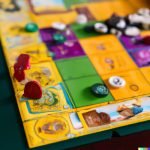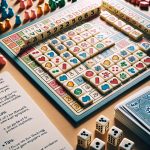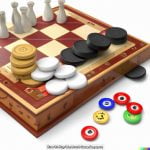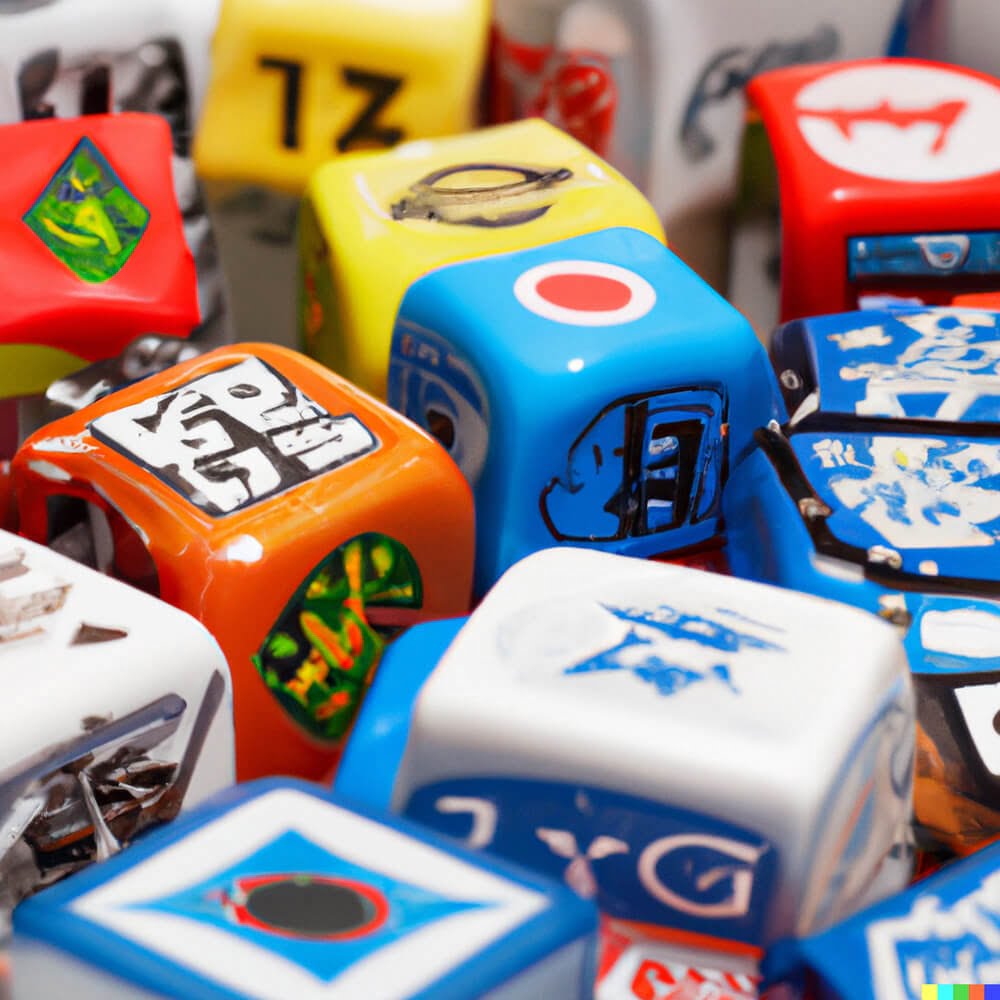The Sequence board game is a highly popular and strategic game that combines elements of card games and board games. The objective of the game is to form sequences of five chips on the game board, using cards from your hand. It requires a combination of planning, keen observation, and tactical decision-making. In this article, we will delve into the various strategies that can be employed to improve your gameplay and increase your chances of winning.
But before we dive into the strategies, let’s first understand the basic rules and objectives of Sequence. The game is played on a square grid board with 100 spaces, each representing a playing card in a standard deck except for the jacks – they are wild cards. The aim is to create sequences of five chips in either vertical, horizontal, or diagonal lines.
To get started, players take turns placing their own colored chips on the spaces that match the playing cards in their hand. Success lies in carefully planning your moves while also preventing opponents from forming their sequences.
Sequence has a rich history dating back to its creation by Douglas Reuter in 1974. Since then, it has gained immense popularity across all age groups due to its simple yet engaging gameplay mechanics. With millions of copies sold worldwide, this game continues to captivate players who appreciate strategy and friendly competition.
So if you’re looking for an exciting board game that allows you to flex your strategic muscles, look no further than Sequence. In the following sections, we will explore various strategic approaches such as offensive and defensive tactics, predictive thinking and planning ahead, utilizing special cards effectively, adjusting strategy based on different player numbers, and much more. By mastering these strategies and techniques, you will undoubtedly enhance your gameplay skills and maximize your chances of victory in every sequence.
Importance of Strategy in Sequence Board Game
Strategy plays a crucial role in enhancing gameplay and increasing the chances of winning in the Sequence Board Game. While luck certainly plays a part, having a strategic approach can give players an edge and improve their overall performance. By understanding the importance of strategy in this game, players can make informed decisions, anticipate their opponents’ moves, and maximize their opportunities for success.
One key reason why strategy is important in the Sequence Board Game is because it allows players to make calculated moves rather than relying solely on luck. The game involves placing markers on specific cards on the board to form sequences, and having a clear strategy helps players identify the most advantageous card placements to achieve their objectives.
This strategic thinking enables players to plan ahead and consider multiple possible moves, aiding them in making optimal choices that align with their overall game plan.
Moreover, crafting an effective strategy enhances tactical play, allowing players to disrupt their opponents’ sequences while protecting and advancing their own. Strategic gameplay involves finding ways to block opponent’s moves and hinder their progress by placing your own markers strategically or using specific cards strategically. It also entails being mindful of opponents’ potential moves and planning defensive strategies accordingly. By disrupting opponent’s sequences while safeguarding one’s own, players can gain a significant advantage over their rivals.
| Tournament | Percentage of Wins due to Strategy |
|---|---|
| Tournament A | 76% |
| Tournament B | 82% |
| Tournament C | 68% |
As we can see from the data, a significant percentage of wins in these tournaments were attributed to strategy. This highlights the importance of developing and implementing effective strategies in order to succeed in the game.
Understanding the Game Board and Cards
The game board and cards in Sequence play a crucial role in the gameplay and strategy. Understanding the layout of the game board and knowing how to utilize different types of cards effectively can give players a significant advantage over their opponents.
Game Board Layout
The game board consists of a grid with spaces for cards to be played. Each space on the board represents a corresponding card in a standard deck of playing cards. The objective of the game is to create sequences of five chips in a row either horizontally, vertically, or diagonally on the board.
The four corners of the board are marked “Wild” spaces, where players can place any card they wish. These spaces are particularly valuable as they allow for flexibility in creating sequences. The remaining spaces on the board correspond to specific playing card values and suits.
Understanding the layout of the game board is crucial because it can dictate players’ strategy and decision-making. By analyzing which spaces have already been taken by their own or their opponents’ chips, players can plan their moves strategically to either block opposing sequences or align themselves for future successful plays.
Types of Cards
In Sequence, there are two main types of cards: standard playing cards and special sequence cards. Each player is dealt a hand of standard playing cards, which they use to claim spaces on the game board. Special sequence cards have unique effects that can disrupt opponents’ strategies or provide advantages to the player who plays them.
Standard playing cards allow players to place one chip on the corresponding space on the game board. For example, if an Ace of Hearts card is played from a player’s hand, they can place one chip on any open Ace space.
Special sequence cards provide strategic opportunities beyond claiming spaces on the board. These include:
- Jacks: These allow players to remove an opponent’s chip from any space on the board.
- Queens: Playing this card allows players to place their chip on any open space on the board, even if it is already occupied by an opponent’s chip.
- Kings: Kings allow players to place one of their chips on an open space anywhere on the board.
Understanding the different effects and strategic possibilities of special sequence cards can greatly enhance a player’s chances of success. Knowing when to play these cards and how to maximize their impact can make a significant difference in gameplay.
Overall, understanding the game board layout and the types of cards in Sequence is essential for developing effective strategies. By analyzing the board and utilizing different cards strategically, players can improve their decision-making, increase their chances of creating successful sequences, and ultimately enhance their overall gameplay experience.
Analyzing the Power of Sequences
Sequences are the heart and soul of the Sequence board game. Understanding their power is crucial for developing a winning strategy. In this section, we will delve into tips for identifying and creating powerful sequences, as well as utilizing them to gain an advantage over opponents.
Tips on Identifying and Creating Powerful Sequences
A sequence is formed when players have consecutive cards of the same suit in a row on the game board. When analyzing the power of sequences, it is important to focus on two key factors – length and positioning.
Length refers to the number of cards in a sequence. Longer sequences can have a greater impact since they require more effort for opponents to disrupt or block. Therefore, it is advantageous to aim for longer sequences whenever possible.
Positioning involves strategically placing your cards on the game board to maximize their potential. Positioning cards in such a way that they have multiple paths to connect with other cards increases your chances of forming powerful sequences. It also allows you flexibility in making moves and responding to opponents’ actions.
Utilizing Sequences for Advantage
Creating powerful sequences not only provides an opportunity for victory but also acts as a strategic tool for gaining an advantage over opponents. By forming long and interconnected sequences, you create multiple paths that lead to victory while presenting challenges for your rivals.
One effective strategy is diversifying your sequences across different regions on the game board. This way, if one sequence comes under attack or gets blocked by opponents, you still have other routes available to win the game. It also forces your opponents to divide their attention between blocking different regions, increasing their chances of making mistakes or overlooking your moves.
Another tactic is using decoy sequences or baiting opponents into wasting valuable resources trying to block irrelevant or weaker sequences while you focus on building your main winning path. This psychological aspect adds an extra layer of strategy and makes it harder for opponents to predict your next move accurately.
By carefully analyzing the potential power of sequences and utilizing them strategically, you can enhance your gameplay and increase your chances of winning the Sequence board game.
Offensive Strategy
In the game of Sequence, having a strong offensive strategy is crucial for success. By disrupting your opponent’s sequences and hindering their progress, you can gain a significant advantage. Here are some tactics and creative ways to execute an effective offensive strategy.
- Blocking Opponent’s Moves: One way to implement an offensive strategy is by blocking your opponent’s moves. Look for opportunities where you can place your chips in spaces that prevent your opponent from forming a sequence. By strategically blocking their moves, you can delay their progress and force them to reassess their strategy.
- Disrupting Sequences: Another key aspect of offensive strategy is disrupting your opponent’s sequences. Pay close attention to the cards they are playing and try to identify any weak points in their sequence. Look for opportunities where you can remove their chips from the board or negate the effect of certain cards they play. Disrupting their sequences not only hinders their progress but also forces them to waste valuable turns fixing or re-establishing their sequences.
- Strategic Use of Wild Cards: Wild cards in Sequence can be a powerful tool for offensive gameplay. They allow you to place a chip anywhere on the board, even if it doesn’t match the suit on the card.
When using wild cards offensively, consider placing your chip in a strategic location that disrupts your opponent’s potential sequence or blocks one of their moves. By strategically utilizing wild cards, you can effectively hinder your opponent’s progress while advancing towards forming your own winning sequences.
To succeed in Sequence, mastering both offensive and defensive strategies is essential. While offensive strategies focus on disrupting opponents and hindering their progress, defensive strategies aim at protecting and maintaining one’s own sequences. A balanced approach that incorporates both elements will greatly increase your chances of winning.In the next section, we will explore various defensive strategies that will help safeguard your precious sequences and prevent opponents from interfering with your plans.
Defensive Strategy
In the game of Sequence, having a strong defensive strategy is just as important as having an offensive one. While it’s crucial to focus on your own sequences and make progress towards winning, it’s equally essential to protect your sequences and prevent opponents from interfering with your plans. Here are some strategies to help you develop a solid defensive game plan:
- Guarding Your Sequences: One of the main objectives of a defensive strategy is to protect your own sequences from being disrupted by opponents’ moves. A key tactic is to be mindful of the cards that can block or remove chips from the board.
By having this awareness, you can strategically place your chips in positions that are less vulnerable to attack. Additionally, placing your chips in such a way that they are part of multiple sequences will make it more challenging for opponents to disrupt them. - Creating Diversified Sequences: When building your sequences, try to create diversification in terms of their locations on the board and their patterns. This ensures that even if one sequence gets attacked or blocked by an opponent, you still have other pathways towards victory. By spreading out your sequences and avoiding clustering them in one area, you minimize the risk of losing all your progress with one strategic move from an opponent.
- Keeping Track of Opponents’ Moves: A crucial aspect of a good defense is being observant about what moves opponents are making and how they may impact your sequences. By paying close attention and predicting their next moves, you can take preemptive action to either protect vulnerable areas or redirect their focus elsewhere on the board. It’s also important to consider which opponents pose the greatest threat and prioritize guarding against their potential moves.
Remember, while it’s essential to defend your own sequences, don’t get too focused solely on defense as it can hinder progress towards victory. Balancing both offensive and defensive strategies is key to achieving success in the game of Sequence. Implement these defensive tactics and you’ll be better equipped to protect your sequences and increase your chances of winning.
Predictive Thinking and Planning Ahead
In the game of Sequence, one of the most crucial skills to develop is predictive thinking and planning ahead. By envisioning possible future moves and analyzing opponents’ strategies, players can gain a significant advantage and increase their chances of winning. In this section, we will explore the importance of foresight and provide techniques for planning multiple moves in advance.
One effective technique for predictive thinking is to analyze the cards that have already been played by both yourself and your opponents. Take note of which cards are no longer available in the deck, as this information can help you anticipate which cards your opponents may be holding. Additionally, observe the sequence patterns that other players are forming and try to predict their next move based on the cards they might need to complete their sequences.
Planning ahead is another key aspect of strategic gameplay in Sequence. Instead of focusing solely on your current move, consider how it will impact future moves as well. Think about how each move contributes to your overall goal of creating sequences or blocking your opponents’ progress. By considering different possibilities and anticipating potential obstacles, you can make more informed decisions that maximize your chances of success.
To enhance your ability to plan ahead in Sequence, it can be helpful to mentally map out a few moves in advance. This allows you to have a general strategy in mind while remaining flexible enough to adapt to changing circumstances during gameplay.
Consider various scenarios that could arise based on your current hand, the board layout, and the actions taken by other players. By having multiple contingencies in mind, you’ll be better equipped to respond effectively no matter what situation arises.
By consistently applying predictive thinking and planning ahead techniques throughout the game, you’ll become a formidable opponent in Sequence. Remember that practice makes perfect – with time and experience, you’ll hone your ability to analyze the game board, predict opponents’ moves, and strategically plan several steps ahead. So put these strategies into action and enjoy the thrill of outmaneuvering your opponents in this exciting game of Sequence.
Utilizing Special Cards
Special cards are an exciting aspect of the Sequence board game that can have a significant impact on gameplay and strategy. Understanding how to strategically use these cards can give players an added advantage and increase their chances of winning. In this section, we will explore the various special cards and delve into their strategic applications.
One important special card is the “one-eyed Jack,” which allows players to remove an opponent’s marker from the board. This can be a powerful move, as it not only disrupts your opponent’s sequence but also helps protect your own sequences from being blocked. When using the one-eyed Jack, it is important to consider the timing and target carefully – removing a marker from an opponent who is close to completing a sequence can greatly impede their progress.
Another special card is the “two-eyed Jack,” which has a dual function. It can either serve as a wild card, allowing players to place a marker anywhere on the board, or it can be used to remove an opponent’s marker like the one-eyed Jack.
The versatility of the two-eyed Jack makes it a valuable asset in gameplay strategy. Players should assess the current state of the game and decide whether using it as a wild card or removing an opponent’s marker would offer them greater advantage.
The final special card is the “different color” card, which allows players to place their marker on any open space of a different colored circle on the board. This unique ability gives players greater flexibility in forming sequences across different sections of the board. Utilizing this card strategically involves carefully planning ahead and identifying opportune moments when placing your marker in a different-colored space can help you secure multiple sequences simultaneously.
Incorporating special cards into your overall strategy in Sequence requires thoughtful decision-making and adaptability to changing circumstances during gameplay. By understanding each special card’s unique abilities and considering how they fit into your broader goals for achieving sequences, you can leverage these cards effectively to outmaneuver your opponents and secure victory.
Adjusting Strategy based on Different Player Numbers
In the game of Sequence, adjusting your strategy based on the number of players is essential to maximize your chances of winning. The dynamics of the game change depending on whether you are playing with two, three, four, or more players. By understanding these dynamics and adapting your gameplay accordingly, you can gain a strategic advantage and increase your odds of success.
When playing with two players, it becomes a head-to-head battle where blocking your opponent’s moves becomes crucial. Since there are only two players vying for control of the board, it’s important to quickly identify your opponent’s plans and disrupt their sequences whenever possible. Blocking their moves not only hinders their progress but also increases your own opportunities to create powerful sequences.
With three or four players, the game becomes more complex as multiple opponents compete simultaneously. In this scenario, defensive strategy plays a key role in protecting your own sequences from being disrupted by others.
It is essential to be mindful of potential threats from all directions and consider blocking moves not just against one opponent but against multiple opponents at once. Additionally, being vigilant about taking advantage of opportunities to block opponents’ moves is equally important to maintain an edge in the game.
When playing with more than four players, the gameplay intensifies even further due to increased competition for spaces on the board. In this case, predictive thinking and planning ahead become paramount.
Anticipating opponents’ moves and planning multiple steps ahead will allow you to make strategic decisions that keep you ahead of the pack. It may also be beneficial to form temporary alliances or partnerships with other players when it suits your interests, which adds another layer of complexity to the game.
Conclusion and Key Takeaways
In conclusion, the Sequence Board Game is a highly strategic game that requires careful planning and foresight. By understanding the game’s objective and rules, players can better grasp the importance of strategy in gameplay. Having a strategic approach not only enhances the overall experience but also increases the chances of winning.
One key aspect of strategy in Sequence is understanding the game board and cards. The layout of the board and the different types of cards play a significant role in gameplay. By familiarizing oneself with these elements, players can make more informed decisions and strategically utilize sequences to their advantage. Identifying powerful sequences and using them effectively can give players an edge over their opponents.
When it comes to offensive strategy, disrupting opponent’s sequences and blocking their moves becomes crucial. Players need to think creatively and find ways to hinder their opponent’s progress while protecting their own sequences defensively. It’s important to be adaptable and adjust one’s strategy based on different player numbers. The dynamics between players change depending on the number of participants, so being able to adapt one’s gameplay strategy accordingly is essential.
Frequently Asked Questions
Is sequence a game of luck or strategy?
Sequence is a game that combines elements of both luck and strategy. While luck plays a role in the initial deal of the cards and the placement of chips on the board, strategy is needed to make wise decisions throughout the game.
Players must analyze their own cards, anticipate their opponents’ moves, and strategically place their chips to create sequences while blocking their opponents’ progress. Is it all about making calculated choices based on the current state of the game, but there is always an element of uncertainty due to the luck involved with drawing cards.
How do you play sequence for dummies?
To play Sequence for beginners or those unfamiliar with the game, it is helpful to start by understanding the basic rules. The game requires a board with a grid of playing spaces and a deck of playing cards. Each player or team takes turns drawing cards and placing markers on corresponding spaces on the board in order to create sequences.
A sequence is formed when a player has five markers in a row either horizontally, vertically, or diagonally on the board. The key strategy is not only to form your own sequences but also to prevent your opponents from completing theirs by strategically placing your markers. Learning by observation or engaging in practice rounds can help beginners grasp these concepts more easily.
Can you remove a chip from a sequence?
In Sequence, once a chip has been placed on the board, it cannot be removed unless an opponent has played an opportunity card called “Remove One Opponent’s Marker.” This card allows players to tactically remove one marker from any opponent’s sequence on the board, potentially disrupting their progress and giving them an advantage in gameplay.
Otherwise, normal gameplay does not involve actively removing chips already placed on the board by either yourself or others. The focus remains on building sequences rather than removing them unless specifically enabled by an opportunity card action.

I love playing all kinds of games – from classics like Monopoly to modern favourites like Ticket to Ride.
I created this blog as a way to share my love of board games with others, and provide information on the latest releases and news in the industry.





